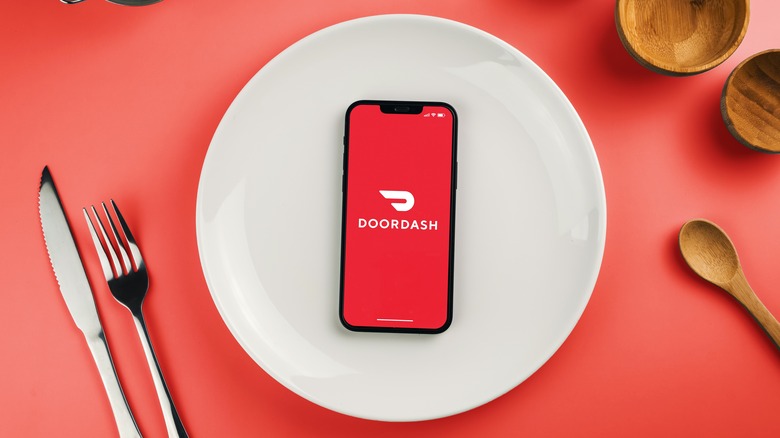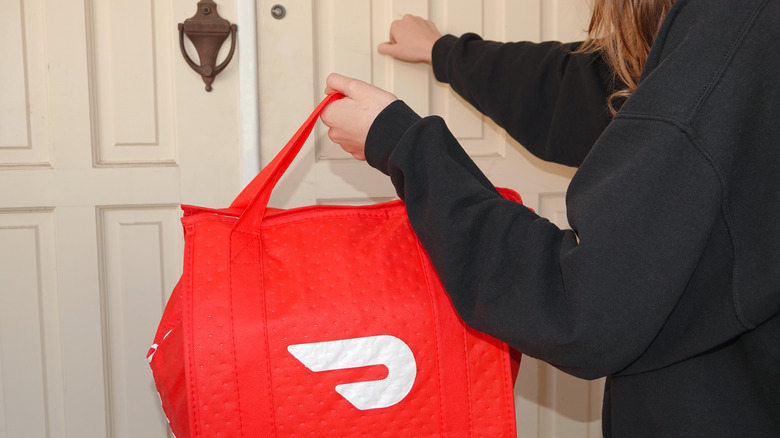How DoorDash Plans To Discourage Restaurants From Raising Prices
Have you ever noticed that your go-to breakfast sandwich is $3 more when you order it for delivery versus buying it in-store? When you turn to a third-party food delivery app to get your meal, there's a good chance you're going to pay more for the same meal – and there may be a good reason for that. According to data from Restaurant Business, delivery apps can require as much as 30% commission on delivery orders. To add insult to injury, restaurants are feeling the hit of inflation as March 2023 food prices remain at an 8.5% year-over-year increase, per the most recent Consumer Price Index.
To offset such financial hits, it isn't uncommon for restaurants to pass the extra cost off to consumers and mark up their delivery menu prices by an average of 20%. A Forbes article from 2020 reported that restaurants on Grubhub marked up their prices by 25% and DoorDash markups hit 46%. Now, three years later, DoorDash is rolling out a new plan to discourage restaurants from raising their prices.
DoorDash is rearranging its algorithm to move businesses with delivery price markups to the bottom of the list. Restaurants with higher delivery prices than they charge in stores will now be less visible to customers using the app, and businesses with consistent pricing will be prioritized. Occupying the coveted "first suggested" real estate spot in the DoorDash app can make a huge difference, as poor exposure can lower a restaurant's sales by 40%.
Giving fair pricing a louder voice
Marking up delivery prices might seem like a strategic move to make ends meet, but DoorDash has been actively trying to warn restaurants that price-gouging is deterring potential sales and wearing on customers' patience. According to DoorDash data via Restaurant Business, price-gouging is reducing would-be sales by 37% and axing repeat customer traffic by 78%. When one restaurant cut its delivery price inflation from 35% to 20%, it saw a 9% increase in sales within the first two weeks alone. Some states don't even allow menu price markups on Uber Eats and Postmates. In other words, some restaurants legally cannot list higher prices for delivery than they list in-store. DoorDash will also be testing in-app tags that read "In-Store Prices," which will let customers know whether they're ordering from a business that gives them the best deal.
On a macro scale, delivery sales across the industry are slowing as a result of inflation hitting consumers' discretionary income. When the pandemic hit in 2020, DoorDash and Uber Eats both saw their growth rates reach at least 100%, reports Bloomberg. But, now, folks aren't scared to dine in anymore, and inflation is making convenience-based services like food delivery may feel more and more like an impossibility – or, at minimum, a luxury that's becoming increasingly harder to justify, especially in the face of increasing markups. This latest move from DoorDash could be the start of an industry-wide shift away from price gouging.

